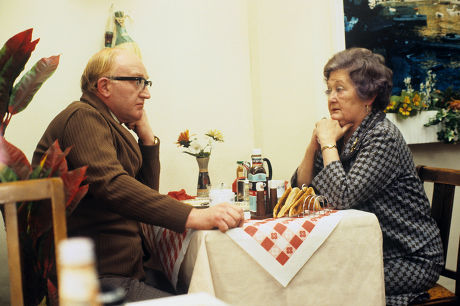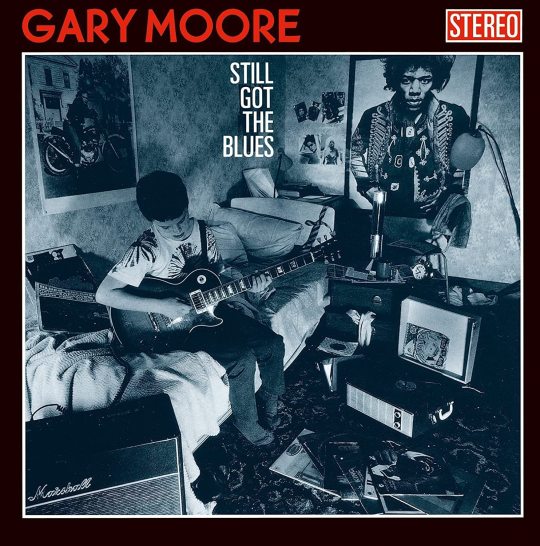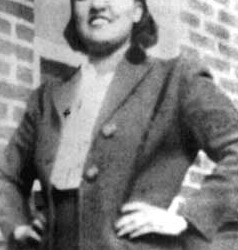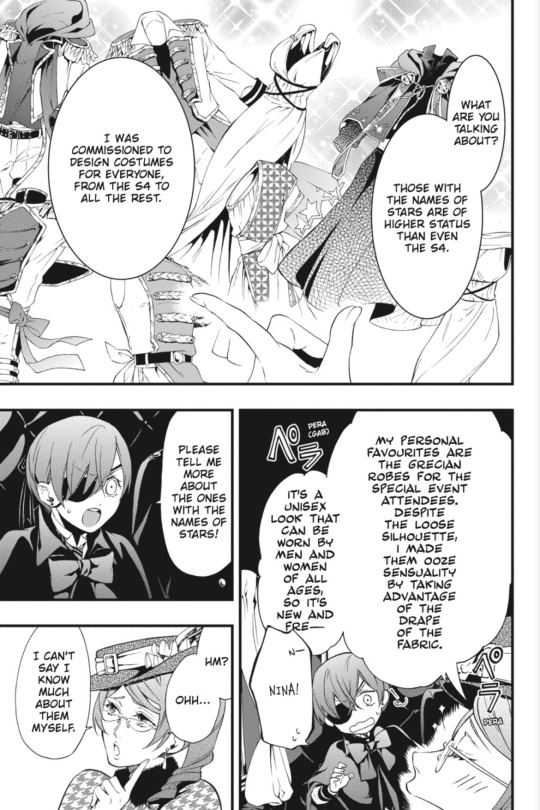#albert a hopkins
Text

Advertisement for Magic: Stage Illusions and Scientific Diversions, Including Trick Photography, by Albert A. Hopkins, 1898.
From Scientific American: Building Edition, vol. 25, no. 2, February 1898.
#old books#vintage books#vintage ads#advertisement#magic#1890s#United States#scientific american#albert a hopkins
1 note
·
View note
Text
If you guys saw the "problematic" men I want to fuck, you'd hurl.
#Hannibal Lecter... played by Anthony Hopkins#Albert “I'm going to start the apocalypse for no reason” Wesker#... Isaiah Abram
9 notes
·
View notes
Video
yara almaz, gömülmez birşey var içimde, kayaları parçalayacak birşey..
nietzsche - thus spoke zarathustra
#elephant man#fil adam#david lynch#friedrich nietzsche#sinema blog#sinema replikleri#sinema#film camera#Roland Barthes#albert camus#sisifos söyleni#düşüş#franz kafka#dönüşüm#milena'ya mektuplar#andrei tarkovsky#Art Director#anthony hopkins#doktor jivago#faust#doctor faustus#mephistopeles#frankenstein#mary shelley#son insan#dracula#notre dam'ın kamburu#genç werther'in acıları
33 notes
·
View notes
Text

THE WILD BUNCH 1969
We all dream of being a child again, even the worst of us. Perhaps the worst most of all.
#the wild bunch#1969#william holden#ernest borgnine#robert ryan#edmond o'brien#warren oates#jaime sanchez#ben johnson#emilio fernández#strother martin#l. q. jones#albert dekker#bo hopkins#jorge russek#alfonso arau#dub taylor
2 notes
·
View notes
Text






Six Plays by Alan Bennett: All Day on the Sands (1.6, LWT, 1979)
"Look at the level of that sauce. Only started yesterday, it's gone down dramatically. I'm under no compulsion to provide sauce. Lathering it on. It's not as if my cooking needed sauce!"
"Make it available on request. Sauce available on request, that'll bring them to a sense of responsibility."
"Wouldn't care, but they go at the salt and pepper like lunatics. You'd think they'd never seen a cruet in their lives."
#six plays by alan bennett#all day on the sands#alan bennett#giles foster#1979#single play#marjorie yates#alun armstrong#gary carp#susan hopkins#jane freeman#ken jones#helene palmer#lynne carol#clifford kershaw#harry markham#albert modley#rosalind wilson#jonathan coy#stephen greenwood#bert gaunt#elizabeth dawn#having pushed the envelope a little at times‚ this series ends on a safer note with a classic Bennett piece about holidaymakers and wryly#observed class and relationship inspired dialogue. it's also for my money perhaps the weakest of the six plays; it has some brilliantly#sharp lines and scenes in true Bennett fashion but the overall play is just a little... aimless. a meandering look at a family on holiday#as Alun Armstrong's father figure struggles with being newly unemployed and Marjorie Yates as his wife variously supports‚ cajoles‚ and#picks at him. at the centre are their two children‚ but particularly their son‚ whose misadventures we follow as he attempts to retrieve a#lost sandal. it's fine enough but it doesn't really go anywhere‚ and it hasn't the bite nor the impact that the others in this strand had#i think partly as well that lies with Giles Foster's direction‚ which hasn't the spark or creativity of Lindsay Anderson‚ nor the fluidity#or careful precision of Stephen Frears (who helmed 4 of the 6 plays and acted as producer). still‚ despite my griping‚ not a bad piece
2 notes
·
View notes
Text




The Hopkins Family (c, 1857)
#oc stuff#yeah#my art#omg#doodles#uhh#the hopkins family#thomas hopkins#Elizabeth hopkins#Hilda Hopkins#Albert Hopkins#fam stuff#ye#victorian#historical horror
1 note
·
View note
Photo


Gary Moore
Still Got the Blues [SHM-CD]
2023 Virgin
—————————————————
Tracks:
01. Moving On
02. Oh Pretty Woman
03. Walking by Myself
04. Still Got the Blues
05. Texas Strut
06. Too Tired
07. King of the Blues
08. As the Years Go Passing By
09. Midnight Blues
10. That Kind of Woman
11. All Your Love
12. Stop Messin’ Around
13. The Stumble
14. Left Me with the Blues
15. Further on up the Road
16. Mean Cruel Woman
17. The Sky Is Crying
—————————————————
Don Airey
Albert Collins
Bob Daisley
Brian Downey
Nicky Hopkins
Albert King
Gary Moore
Andy Pyle
Graham Walker
Mick Weaver
* Long Live Rock Archive
#SHMCD#GaryMoore#Gay Moore#Don Airey#Albert Collins#Bob Daisley#Nicky Hopkins#Albert King#Andy Pyle#Graham Walker#Mick Weaver#Still Got the Blues#Reissue#Blues Brothers#2023
1 note
·
View note
Note
do you have anderperry and/or dps headcanons you feel very strongly about?
OH BOY DO I EVER!!!!!
- Neil’s favorite thing to do is come up behind Todd and hug him and just… stay there for any period of time. From anywhere between a minute and the rest of the time they’re in a given place. Todd never comments on it, Neil never explains, it’s just a thing.
- Todd always stands on Neil’s right and vice versa Neil always stands on Todd’s left. If it’s the other way around, no matter what they’re doing, they’ll switch places because it feels wrong.
- Neil gets too caught up in retelling Todd his dreams in the morning so it can take him upwards of ten minutes to do his tie, which sometimes makes him late to leaving, so to combat it Todd started doing Neil’s tie in the morning while he talked.
- Neil and Ginny (and by extension Chet) are cousins by marriage. Does that make sense at all? No. But I do not care.
- Charlie was the tallest of the group up until tenth grade when everyone else got growth spurts and left him in the dust.
- Cameron lives with his grandparents.
- The Anderson family is HUGE (I’m talking 4 pairs of grandparents, 6 aunts, 5 uncles, 8 cousins kind of huge) and Jeff and Todd are the only boys in their generation.
- Jumping off from the last one: Todd’s cousins used to use him as a guinea pig because he was the youngest.
- Mrs. Perry’s first name is Nancy.
- Mr. And Mrs. Anderson are named Patrick and Rebecca respectively.
- Out of the entire group, Pitts is the only one that’s ever actually had a girlfriend by the start of the movie. (For like 3 weeks in 7th grade, but still)
- Ginny and Chris have complete opposite tastes in music and are always exchanging records for the other to see if they like.
- Todd loves snakes.
- Knox jumps a solid half a foot in the air when scared.
- Meeks hates spiders. Charlie loves them. You can imagine how that tends to go down.
- Neil had always wanted a dog but could never get one because his mom has a fur allergy.
- Cameron does origami in his spare time.
- Meeks can’t do a cartwheel and EVERYONE makes fun of him for it.
- Neil had a one-sided beef with Jeff pre-junior year that he could never justify or rationalize until he met Todd.
- Chris does Ginny’s lipgloss for her every morning before school.
- Todd Anderson autism + Neil Perry AuDHD is real TO ME.
- Neil and Todd can’t be alone together for longer than five minutes without breaking out into hysterical laughter over essentially nothing.
- Neil and Charlie once tried to convince a store clerk they were orphan brothers for free ice cream. It did not work.
- Todd can’t cook for shit and is on ‘handing-people-things-they-need’ duty. Neil can cook just barely. Cameron, somehow, is a master chef. Knox consistently nicks his fingers with knives and is no longer allowed in the kitchen.
- In a modern setting, Knox would absolutely have two moms.
- Neil and Todd’s wardrobes have essentially morphed into one singular wardrobe and they can’t differentiate what belongs to who anymore. They’ve stopped caring and just wear each others clothes if they want to.
- Neil is a master at drunk karaoke. Charlie is a master at drunkenly pressuring Neil into doing drunk karaoke.
- The ribbon Chris wears in her hair is a gift from Ginny.
- Pitts is almost scarily good at checkers.
- Charlie can hold his breath for almost three minutes.
- Neil is a biter.
- ‘Spazs’ name is Eugene, Stick’s name is Roy, Hopkins’ first name is Albert.
- Keating’s implied british wife(?) is named Jessica.
- Charlie is the only one of the guys that can SOMEWHAT dance.
- More often than not, Todd is actually the one to reach out and hold Neil’s hand rather than the other way around.
- Todd’s middle name is Augustus.
And that’s all the ones I can remember right now!!! Questions, comments, concerns?????
#jareth#dps#dead poets society#anderperry#chrisginny#neil perry#todd anderson#charlie dalton#richard cameron#gerard pitts#steven meeks#stephen meeks#knox overstreet#chris noel#ginny danburry#chet danburry#john keating
193 notes
·
View notes
Text
˗ˏ✎*ೃ˚ :Creepypasta HC's: Piercings:;
Nina Hopkins: tongue, smiley, bridge, stretched lobes, industrial (L), mid helix, tragus, snug, daith, coin slot (R).
Toby Rogers: lip ring, tongue, eyebrow, standard lobe.
Jane Richardson: nostril, helix, standard lobe.
Jeff the Killer: prince albert, eyebrow.
Ben Drowned: tongue.
Clockwork: eyebrow.
#creepypasta#nina the killer#jeff the killer#ben drowned#jane the killer#clockwork#ticci toby#headcanon#tongue piercings are sexy
56 notes
·
View notes
Text

Billy Cox: Jimi’s playing was firmly rooted in the blues: “When we first started playing, the only songs we basically jammed on from the very, very beginning were blues songs, because musically we were limited at that particular time as far as repertoire goes. Basically, he was an R&B player—a rhythm and blues player.” Billy recalls that besides Chuck Berry, Jimi’s favorite players to listen to were contemporary bluesmen: “Slim Harpo, especially. Muddy Waters, Lightnin’ Hopkins, Howlin’ Wolf, Albert King, B.B. King. He said they were great bluesmen. A lot of songs we initially started playing were by those guys. That was point A. Then we graduated into the Top-40 rhythm and blues, and then into a lot of pop numbers.” In December, Jimi asked Al to send him his red Danelectro Shorthorn. Billy details, “He used that all through the service, up to a year after we got out. When we were making a little bit more money, I co-signed for him and he traded that in and got an Epiphone.” According to Cox, the “Betty Jean” guitar was subsequently destroyed in a house fire.
Jimi’s unwavering dedication to his instrument had its price, socially speaking: “Around this time people nicknamed Jimi ‘Marbles,’” Billy explained, “because he walked up the street with an electric guitar, playing it. He’d play it in the show, he’d play it coming back from the gig. I saw him put 25 years into the guitar in five years, because it was a constant, everyday occurrence with him. People called him Marbles because they thought he was crazy. They couldn’t understand why a man would basically be playing the guitar all the time. But basically, he knew that he had to make this instrument an extension of his body. It was like how people learn to whistle. He learned to play a guitar like a person would whistle, and you have your lips with you all the time, so you can whistle. I remember mornings waking Jimi up, knocking on his door, and there he was laying on the bed with the same clothes he had on the night before, his guitar laying across his stomach or alongside him. He was practicing all night long.”
by Jas Obrecht
Photo by Ed Thrasher.
53 notes
·
View notes
Text




We at *BP family in the pass post a story of Mrs Henrietta Lacks story and how she and her family for generation were robbed by the scientific community for decades.
The most important information to take away is that a single BLACK WOMAN DNA has contributed to modern medical breakthroughs and cures, and is still ongoing.
There are a myriad of scientific developments due to Mrs Lacks -HELA CELLS as them called it. We are please to see that the family is getting restitution and reparations from yet again being robbed by them and covering up as them taken the credit and leaving the Black community/family in the dark and high and dry.
We will reblog the original post.
ONCE AGAIN A BLACK WOMEN IS THE MOTHER OF INVENTION
(The above is a *BP* commentary opinion)
BLACK PARAPHERNALIA DISCLAIMER - PLEASE READ
Family of Henrietta Lacks settles lawsuit with biotech giant, lawyer says

The family of Henrietta Lacks, a Black woman whose cancer cells were used without permission to form the basis of decades of scientific research, has reached a settlement with the biotech company Thermo Fisher Scientific.
The cells, known as HeLa cells, were taken from Lacks without her knowledge or consent in 1951 when she was seeking cervical cancer treatment at Johns Hopkins, in Baltimore. Doctors discovered that the cells doubled every 20 to 24 hours in the lab instead of dying. They were the first human cells that scientists successfully cloned, and they have been reproduced infinitely ever since.
Lacks herself died in 1951, but her cells continued to be used after her death in research that led to a series of medical advancements, including in the development of the polio vaccine and in treatments for cancer, HIV/AIDS, leukemia and Parkinson's disease. Lacks' family only found out about it decades later.
Lacks' story reached millions of Americans through the nonfiction bestseller "The Immortal Life of Henrietta Lacks," which was made into an HBO movie starring Oprah Winfrey as Lacks' daughter, Deborah.
In 2021, Lacks' estate filed a lawsuit against Thermo Fisher Scientific, alleging that the company was mass producing and selling tissue taken from Lacks even after it became well-known that the materials had been taken from her without her consent. The suit was filed exactly 70 years after Lacks' death.
"Thermo Fisher Scientific has known that HeLa cells were stolen from Ms. Lacks and chose to use her body for profit anyway," the lawsuit alleged. It has been previously reported that Thermo Fisher Scientific said they generate about $35 billion in annual revenue. In the lawsuit, Lacks' estate asked that the company "disgorge the full amount of its net profits obtained by commercializing the HeLa cell line to the Estate of Henrietta Lacks."
The suit also sought an order stopping the company from using the HeLa cells without the estate's permission. The terms of Tuesday's settlement were not made public, but Crump said in a news conference that both parties were "pleased" to have resolved the matter outside of court, CBS Baltimore reported. (except taken from KERRY BREEN CBS NEWS , 2023 )
INFORMATION OBTAIN FROM NATURE.COM FOR MORE READ CLICK HERE
SOME CONTRIBUTIONS OF THE HELA CELLS
-HeLa cells were first used to study the growth and spread of poliomyelitis virus, the cure of Polio
-HeLa cells have also been instrumental in the development of Human papilloma virus (HPV) vaccines.
-Over the years, HeLa cells have been infected with various types of viruses including HIV, Zika, herpes, and mumps
-HeLa cells have been used in a number of cancer studies, including those involving sex steroid hormones such as estradiol, estrogen, and estrogen proliferation.
-Hela cells contribute to scientists Joe Hin Tjio and Albert Levan to develop better techniques for staining and counting chromosomes.This was important for the study of developmental disorders such as down syndrome that involved the number of chromosomes.
-HeLa cells were sent on the first satellite and human space missions to determine the long term effects of space travel on living cells and tissue.
-HeLa cell line was derived for use in cancer research. and human papillomavirus 18 (HPV18) to human cervical cells created the HeLa genome, which is different from Henrietta Lacks’ genome in various ways,
-The complete genome of the HeLa cells was sequenced and published on 11 March 2013[46][47] without the Lacks family’s knowledge
-HeLa cells as a tool to uncover the machinery required and process used for invasion of human cells. Researchers have also investigated the stability of the virus’s genomic material in HeLa cells by comparing its genomic material with that of many other viruses. The use of HeLa cells in COVID-19 research has provided insights on the molecular mechanics of SARS-CoV-2019 and the components required for infection.
INFORMATION OBTAINED HERE
A LASTING CONTRIBUTION TO THE WORLD
When Henrietta Lacks and her cells alerted the world to the existence of immortal human cells, opportunities arose for research and medical treatment development.
Today, her cells continue to serve academic and industrial institutions. So much so that she has been described as the Mother of Modern Medicine in a painting by artist Kadir Nelson in 2017.
The use of HeLa cells in COVID-19 research is a testament to Henrietta Lacks’s lasting contribution to provide microscopic tools for scientific discoveries that billions have benefitted from thus far and will benefit from in the future to come.
INFORMATION OBTAIN FROM NATURE.COM FOR MORE READ CLICK HERE
SOME CONTRIBUTIONS OF THE HELA CELLS
-HeLa cells were first used to study the growth and spread of poliomyelitis virus, the cure of Polio
-HeLa cells have also been instrumental in the development of Human papilloma virus (HPV) vaccines.
-Over the years, HeLa cells have been infected with various types of viruses including HIV, Zika, herpes, and mumps
-HeLa cells have been used in a number of cancer studies, including those involving sex steroid hormones such as estradiol, estrogen, and estrogen proliferation.
-Hela cells contribute to scientists Joe Hin Tjio and Albert Levan to develop better techniques for staining and counting chromosomes.This was important for the study of developmental disorders such as down syndrome that involved the number of chromosomes.
-HeLa cells were sent on the first satellite and human space missions to determine the long term effects of space travel on living cells and tissue.
-HeLa cell line was derived for use in cancer research. and human papillomavirus 18 (HPV18) to human cervical cells created the HeLa genome, which is different from Henrietta Lacks’ genome in various ways,
-The complete genome of the HeLa cells was sequenced and published on 11 March 2013 without the Lacks family’s knowledge
-HeLa cells as a tool to uncover the machinery required and process used for invasion of human cells. Researchers have also investigated the stability of the virus’s gnomic material in HeLa cells by comparing its genomic material with that of many other viruses.
The use of HeLa cells in COVID-19 research has provided insights on the molecular mechanics of SARS-CoV-2019 and the components required for infection.
INFORMATION OBTAINED HERE
A LASTING CONTRIBUTION TO THE WORLD
When Henrietta Lacks and her cells alerted the world to the existence of immortal human cells, opportunities arose for research and medical treatment development.
Today, her cells continue to serve academic and industrial institutions. So much so that she has been described as the Mother of Modern Medicine in a painting by artist Kadir Nelson in 2017.
The use of HeLa cells in COVID-19 research is a testament to Henrietta Lacks’s lasting contribution to provide microscopic tools for scientific discoveries that billions have benefitted from thus far and will benefit from in the future to come.
13 notes
·
View notes
Note
1/ I have come up with a strange theory, I hope you'll listen to it, which is that the real mastermind behind the aurora Society is not Ryan Stocker nor the Undertaker, but Viscount Druitt (and other character I think one of them is John brown) , because he is the only person who has great influence among the nobles and seems accustomed to organizing this type of event (such as the human traffic pary that he held in his manor in Jack the Ripper arc )



Is the Viscount of Druitt the mastermind of the Aurora Society?
I highly doubt it. I have to assume the leader used to be Stoker, and perhaps Druitt is a high-ranking member, but he has never struck me as mastermind material. I honestly don't know whether the society is run by real Ciel and Undertaker now or if it's still a separate entity. But Druitt doesn't seem to think too clearly about what he's getting himself into, so I see him as more like a very important chessman for real Ciel.
That said, I do suspect he's got something to do with the advanced technology that's being used for the blood transfusions and what appears to be hemodialysis. He does have a medical license, after all, even though he has no practice. Undertaker might be keeping him alive just to use him for his medical knowledge.
But I wouldn't say he's the only person involved with Sphere Music Hall or the Aurora Society with an interest in Grecian attire. (In fact, the reference Druitt makes is to the infamous Roman emperor, Nero, not a Greek ruler.)

There are two other people to look at here: Blavat Sky and Nina Hopkins.

Nina even praises Blavat for his "innovative and daring" suggestions about clothes...

...and she says how her favorite pieces are the Grecian robes.

Druitt's desire to rule society in some new era is manga canon, as he talks about it while on the Campania.

I will admit that he seems committed to the idea of incorporating the Aurora Society into his vision of rule.

Even the Akuma6 side chapter shows him as someone who will go to great lengths for power. In that scenario he basically wants all the "main character energy". But I still don't think he's ever actually controlled the Aurora Society.
Stoker had higher ideals, but his ambitions made him highly susceptible to the promises he thought Undertaker was making. Similarly, Druitt's cravings for power and a lavish lifestyle make him an easy target for Undertaker.
I don't see the Aurora Society as too much of a direct threat to the queen. More like both the Aurora Society and the queen (and her servants, like John Brown) are serious threats to our earl.
And John Brown is possibly the shadiest of all, mostly because I don't believe he's human. Not a reaper, either. More like an angel or demon. Whatever he is, he appears to have a contract with the queen. I believe the hand puppet of Prince Albert is part of the contract... and that he's ultimately controlling her. Whenever the puppet shows up, her entire mood changes and she becomes more open to John Brown's suggestions... presented to her through the puppet. It's like she really does think her husband has returned to her from the grave every time she sees the puppet. I'm almost surprised our earl hasn't noticed how similar that situation looks to the sort of offer Sebastian made when they were forming their own contract. Our earl saw through the deceitful offer to make him happy in the false belief his brother had returned from the dead. Can you imagine what the series would be like if, whenever our earl needed guidance or comforting, Sebastian whipped out a puppet that looked like a mirror image of his young master?
Anyway, I expect our earl and Sebastian to have a major confrontation with the queen and her servants. And, of course, for our earl and Sebastian to have some final confrontation with Undertaker, real Ciel, and whichever other star lords that can still assist by then. I expect reapers to make appearances at one or both of those fights....
Druitt? He might finally be killed during all this... but perhaps he survives... yet again.
#black butler#kuroshitsuji#viscount of druitt#aleister chamber#aurora society#sphere music hall#nina hopkins#undertaker#sebastian michaelis#earl phantomhive#our earl#real ciel#ciel phantomhive#demon contract#queen victoria#john brown#greek fashion#roman emperor#nero#observation#theories#anon asks#i answer#answered asks#apr 5 2023#sorry for the delay#blavat sky#ch59#ch107.5#ch116
21 notes
·
View notes
Text



The Scottish actor Nicol Williamson was born on October 14th 1938 in Hamilton.
Williamson was an enormously talented actor who was considered by some critics to be the finest actor of his generation in the late 1960s and the 1970s, rivalled only by Albert Finney in his generation.
Born the son of a factory owner. When he was 18 months old, his family moved to Birmingham, England. Williamson was sent back to Hamilton to live with his grandparents during World War II due to Birmingham's susceptibility to bombing, but returned when the war ended, and was educated at the Central Grammar School for Boys, Birmingham
He left school at 16 to begin work in his father’s factory and later attended the Birmingham School of Speech & Drama. He recalled his time there as “a disaster” and claimed “it was nothing more than a finishing school for the daughters of local businessmen”. After his national service as a gunner in the Airborne Division, Williamson made his professional debut with the Dundee Repertory Theatre in 1960.
In 1962 he made his London debut as Flute in Tony Richardson’s production of A Midsummer Night’s Dream at the Royal Court Theatre. His first major success came in 1964 with John Osborne’s Inadmissible Evidence for which he was nominated for a Tony Award when it transferred to Broadway in 1965. 1964 also saw him appearing as Vladimir in Samuel Beckett’s Waiting for Godot at the Royal Court Theatre. In 1968, he starred in the film version. Williamson’s Hamlet for Tony Richardson at the Roundhouse caused a sensation and was later transferred to New York and made into a film, with a cast including Anthony Hopkins and Marianne Faithfull. Faithfull later stated in her autobiography Faithfull that she and Williamson had had an affair while filming Hamlet.
His most celebrated film role was as Merlin the magician in the King Arthur epic Excalibur in 1981. Director John Boorman cast him as Merlin opposite Helen Mirren as Morgana over the protests of both actors; the two had previously appeared together on stage in Macbeth, with disastrous results, and disliked each other intensely. It was Boorman’s hope that the very real animosity that they had towards each other would generate more tension between them on screen, as is evident from their scenes together. Williamson gained recognition from a much wider fanbase for his performance as Merlin. A review of Excalibur in the London Times in 1981 said, “The actors are led by Williamson’s witty, perceptive Merlin, missed every time he’s off the screen.”
Some of his other notable cinematic performances are as a deeply troubled Irish soldier in the 1968 Jack Gold film The Bofors Gun; Sherlock Holmes in the 1976 Herbert Ross film The Seven-Per-Cent Solution; and Little John in the 1976 Richard Lester film Robin and Marian.
Williamson had a reputation as a bit of a hellraiser and a troublesome man who was known for several tantrums and on-stage antics. During the Philadelphia tryout of Inadmissible Evidence, a play in which he delivered a performance that would win him a Tony Award nomination in 1965, he hit the equally mercurial producer David Merrick. In 1968 he apologised to the audience for his performance one night while playing Hamlet and then walked off the stage, announcing he was retiring. In the early 1970s, Williamson left the Dick Cavett Show prior to a scheduled appearance, leaving the host and guest Nora Ephron to fill the remaining time. In 1976, he slapped an actor during the curtain call for the Broadway musical, Rex. In 1991, he hit co-star Evan Handler on the backside with a sword during a Broadway performance of I Hate Hamlet.
In 1974, Williamson recorded an abridged reading of The Hobbit for Argo Records, with authorisation for abridgement provided by Tolkien’s publisher. The recording was produced by Harley Usill. According to his official website, Nicol himself re-edited the original script, removing many occurrences of “he said”, “she said”, and so on, as he felt that an over-reliance on descriptive narrative would not give the desired effect. In 1971, Williamson married actress Jill Townsend, who played his daughter in the Broadway production of Inadmissible Evidence. They had a son, Luke, but divorced in 1977.
Despite concerns over his health in the 1970s, Williamson admitted drinking heavily and claimed to smoke 80 cigarettes a day. In an episode of The David Frost Show in the 1960s, during a discussion about death, which also involved poet John Betjeman, Williamson revealed that he was very much afraid of dying, saying that “I think of death constantly, throughout the day” and that “I don’t think there is anything after this, except complete oblivion.” On 25 January 2012, Luke Williamson announced on his father’s official web site that Nicol Williamson had died on 16th December 2011, aged 75, after a two-year struggle with oesophageal cancer. The news was released late as the actor did not want any fuss to be made over his death.
8 notes
·
View notes
Text
How many of these famous autists do you recognize? And this isn't even a complete list!
So many amazing wonderful people are autistic. I will never understand why people hate us so much.
Actors/actresses/entertainment:
Chloe Hayden
Talia Grant
Rachel Barcellona
Sir Anthony Hopkins
Dan Akroyd
David Byrne
Darryl Hannah
Courtney Love
Jerry Seinfeld
Roseanne Barr
Jennifer Cook
Chuggaaconroy
Stephanie Davis
Rick Glassman
Paula Hamilton
Dan Harmon
Paige Layle
Matthew Labyorteaux
Wentworth Miller
Desi Napoles
Freddie Odom Jr
Kim Peek
Sue Ann Pien
Henry Rodriguez
Scott Steindorff
Ian Terry
Tara Palmer -Tomkinson
Albert Rutecki
Billy West
Alexis Wineman- Miss America contestant
Athletes:
Jessica- Jane Applegate
Michael Brannigan
David Campion
Brenna Clark
Ulysse Delsaux
Tommy Dis Brisay
Jim Eisenreich
Todd Hodgetts
John Howard
Anthony Ianni
Lisa Llorens
Clay Matzo
Frankie Macdonald
Jason McElwain
Chris Morgan
Max Park
Cody Ware
Amani Williams
Samuel Von Einem
Musicians:
Susan Boyle
Elizabeth Ibby Grace
David Byrne
Johnny Dean
Tony DeBlois
Christopher Dufley
Jody Dipiazza
Pertti Kurikka
James Jagow
Ladyhawke
Kodi Lee
Left at London
Red Lewis Clark
Abz Love
Thristan Mendoza
Heidi Mortenson
Hikari Oe
Matt Savage
Graham Sierota
SpaceGhostPurp
Mark Tinley
Donald Triplett
Aleksander Vinter
Comedians:
Hannah Gatsby
Robert White
Bethany Black
Scientists/inventors/mathematians/Researchers:
Damian Milton
Bram Cohen
Michelle Dawson
Carl Sagan
Writers:
Neil Gaimen
Mel Bags
Kage Baker
Amy Swequenza
M. Remi Yergeau
Sean Barron
Lydia X Z Brown
Matt Burning
Dani Bowman
Nicole Cliffe
Laura Kate Dale
Aoife Dooley
Corrine Duyvus
Marianne Eloise
Jory Flemming
Temple Grandin
John R Hall
Naomi Higashida
Helan Hoang
Liane Holliday Willey
Luke Jackson
Rosie King
Thomas A McKean
Johnathan Mitchell
Jack Monroe
Caiseal Mor
Morenike Giwa- Onaiwu
Jasmine O'Neill
Brant Page Hanson
Dawn Prince-Hughs
Sue Robin
Stephen Shore
Andreas Souvitos
Sarah Stup
Susanna Tamaro
Chuck Tingle
Donna Williams
Leaders:
Julia Bascom
Ari Ne'eman
Sarah Marie Acevedo
Sharon Davenport
Joshua Collins
Conner Cummings
Kevin Healy
Poom Jenson
Amy Knight
Jared O'Mara
David Nelson
Shaun Neumeier
Master Sgt. Shale Norwitz
Jim Sinclair
Judy Singer
Dr. Vernon Smith
Artists:
Miina Akkijjyrkka
Danny Beath
Deborah Berger
Larry John Bissonnette
Patrick Francis
Goby
Jorge Gutierrez
Lina Long
Johnathan Lerman
Julian Martin
Haley Moss
Morgan Harper Nichols
Tim Sharp
Gilles Tehin
Willem Van Genk
Richard Wawro
Poets:
David Eastham
Christopher Knowles
David Miedzianik
Henriette Seth F
5 notes
·
View notes
Text

The following is the lineup for the polls by date, made using a random number generator. New characters introduced in chapter 199 will automatically be added to the end of the roster.
April 19th - April 26th
Chlaus
Rian Stoker
Lord Ackroyd's son
FOL Orphanage staff
Timber
Claude Faustus
Tanaka
Conny
Emily
Baldroy / Bard / Baldo
Finnian / Finny
Sharpe Hanks
Mabel
Burnett
April 20th - April 27th
Soma's elephant
Beast
Sophie Smith
Theodore
Finny's hat
Funtom Corporation's unicorn suit
Karl Woodley
Oscar
Chris Heathfield
Sieglinde Sullivan
Fred Abberline
Stella Rose
Charles Phipps
the orphan that called Sebastian an old guy
April 21st - April 28th
Nick
Joanne Harcourt
Purple House dorm master
Agni / Arshad Satyendra Iyer
Yana Toboso
Grete Hilbard
the Mad Dog of Venice
Abbie
Johnny
Mina
Rachel Phantomhive
Charles Phipps's chicken
Haku
Sascha
April 22nd - April 29th
Jumbo
Mrs. Mayell
Goethe
the Rowdy Count
Georg von Siemens
Margaret Connor
Al
Cedric Brandel
Mathilda Simmons
Wendy
Sam / Old Man Sam
Grelle Sutcliff
Ellery Nixon
Eric Slingby
April 23rd - April 30th
Edward Midford
Luka Macken
Queen Victoria
Lord Ackroyd
Layla
the other children in the lab Finny was kept in
Betty
Reaper trainees
Green House dorm master
Vincent Phantomhive
Drossel Keinz
Kelvin
Lawrence Bluewer's sisters
Charles Grey
April 24th - May 1st
Margaret Turner
Akashi
Snake
Edgar Redmond
Derrick Arden
Ronald Knox
Aurora Society member
Bloodbath Johnny
Wilde
Soma Asman Kadar
Claude's birds
Sebastian's silverware
Chef Rickman
Susannah Connor
April 25th - May 2nd
Susan
Artie
Damian
John Brown
Saneatsu Nekoma
Peter
Lawrence Anderson / Pops
Chef Wollest
Chris Heathfield's maids
demon Crow
Nina's assistants
Ludger
Prince Albert puppet
Miranda
April 26th - May 3rd
Blavat Sky
Vicar Rathbone
Julius Pitt
walking stick shopkeeper
Grimsby Keane
Ciel's horse
Edward V
Jay the Undertaker
Gregory Violet
Canterbury
Jeremy Rathbone
Doctor
the cat from the live action movie
Henry Barrymore
April 27th - May 4th
Lawrence Bluewer
Prince Albert
Higham
the Panzer
the train kidnapper
Donne
Heinrich
Chef Lach
Dagger
Doll / Freckles
Sam's grandson
Bitter Rabbit
Japanese man with a katana
"Ciel" Phantomhive / Our Ciel / O!Ciel
April 28th - May 5th
Mey-Rin
Undertaker's mourning lockets
Webster
Purple House prefect from Vincent's year
Patrick the Grey Wizard
Diedrich
Johann Agares
Bronte
Carter
Othello
the cultists
Baldroy Jr.
John Brown's horse
Sphere Music Hall staff
April 29th - May 6th
Jackknife Haywood
Nina Hopkins
William's death scythe
Angela Blanc
Wolfram Gelzer
McDowell
Ronald's lawnmower
Arthur Randall
Aleister Chamber / Viscount of Druitt
Keats
Annie
Terry
Hao
Maria
April 30th - May 7th
Irene Diaz
Polaris
beggar boy that Soma gives a necklace to, mother, and baby brother
kenpo master
Red House dorm master
Ran-Mao
Shiori Genpou
Cedric K. Ros
Lau
Clayton
William T. Spears
Patrick Phelps
Japanese woman with a lunchbox
Oliver
May 1st - May 8th
Arthur Conan Doyle
the bear
Grelle's chainsaw
Trancy / Former Head Trancy
Richard
Aristocrat of Evil with the scarred face
the archeologist
Joker
Jan
the cats Sebastian rescues from the rain
Hilde Dickhaut
Rin
Cloudia Phantomhive
"Deer"
May 2nd - May 9th
King's Bear prostitutes
McMillan
"Her"
Undertaker's death scythe
Daniel
Ginny
Sieglinde Sullivan's father
Charles Bennett Sato
demon Ciel
Ada
Arnold Trancy
Ciel Phantomhive bizarre doll / Real Ciel / R!Ciel
Arihito Genpou
Thomas Wallis
May 3rd - May 10th
Chef Tarpin
Queen Victoria (Season 1)
Lau's ladies
Fennian
Harold West Jeb
Nicholas
Professor Sullivan / village crone
Anne Drewanz
CGI horses / driver
Margaret Connor's father
Ciel Phantomhive child / R!Ciel child
Jane
Paula
Wordsworth
May 4th - May 11th
Maurice Cole
Alexis Leon Midford
bizarre dolls
the turnspit dog
the "werewolves"
O!Ciel's land renters
priest
Pluto
Sebastian the dog
Red House prefect from Vincent's year
the Sebastian Roomba
bizarre doll horses
Baldroy's cow
Undertaker
May 5th - May 12th
Hanae Wakatsuki
the iceberg
Alan Humphries
Ash Landers
Thompson
Snake's unnamed snakes
Milly
Munemitsu Aoki
Alois Trancy / Jim Macken
Elizabeth Midford / Lizzy
Aurora Society purified water seller
Drossel's dolls
the timetable guy
Herman Greenhill
May 6th - May 13th
Azzurro Vanel
William's pigeons
Joanna
Reaper managers
Dove
Countess Trancy and her baby
German countryman
Scotland Yard officers
Haku's henchman
Lorraine McDowell
demon "pet" (the xenomorph)
Hannah Annafellows
Angelina Dalles / Madam Red / Aunt An
Pitt
May 7th - May 14th
Vincent Phantomhive's staff
Paul Jones
Francis Midford
Sebastian Michaelis
Cheslock
Phantomhive family ring
James
Edward Abberline
Baron Ridley
Sebastian's owl
17 notes
·
View notes
Text

Bibliography
Emily Achtenberg, “Community Organizing and Rebellion: Neighborhood Councils in El Alto, Bolivia,” Progressive Planning, No.172, Summer 2007.
Ackelsberg, Martha A., Free Women of Spain: Anarchism and the Struggle for the Emancipation of Women, Bloomington, IN: Indiana University Press, 1991.
William M. Adams and David M. Anderson, “Irrigation Before Development: Indigenous and Induced Change in Agricultural Water Management in East Africa,” African Affairs, 1998.
AFL-CIO “Facts About Worker Safety and Health 2007.” www.aflcio.org [viewed January 19, 2008]
Gemma Aguilar, “Els Okupes Fan la Feina que Oblida el Districte,” Avui, Saturday, December 15, 2007.
Michael Albert, Parecon: Life After Capitalism, New York: Verso, 2003
Michael Albert, “Argentine Self Management,” ZNet, November 3, 2005.
Anyonymous, “Longo Maï,” Buiten de Orde, Summer 2008.
Anonymous, “Pirate Utopias,” Do or Die, No. 8, 1999.
Anonymous, “The ‘Oka Crisis’ ” Decentralized publication and distribution, no date or other publishing information included.
Anonymous, “You Cannot Kill Us, We Are Already Dead.” Algeria’s Ongoing Popular Uprising, St. Louis: One Thousand Emotions, 2006.
Stephen Arthur, “‘Where License Reigns With All Impunity:’ An Anarchist Study of the Rotinonshón:ni Polity,” Northeastern Anarchist, No.12, Winter 2007. nefac.net
Paul Avrich, The Russian Anarchists, Oakland: AK Press, 2005.
Paul Avrich, The Modern School Movement: Anarchism and Education in the United States, Oakland: AK Press, 2005.
Roland H. Bainton, “Thomas Müntzer, Revolutionary Firebrand of the Reformation.” The Sixteenth Century Journal 13.2 (1982): 3–16
Jan Martin Bang, Ecovillages: A Practical Guide to Sustainable Communities. Edinburgh: Floris Books, 2005.
Harold Barclay, People Without Government: An Anthropology of Anarchy, London: Kahn and Averill, 1982.
David Barstow, “U.S. Rarely Seeks Charges for Deaths in Workplace,” New York Times, December 22, 2003.
Eliezer Ben-Rafael, Crisis and Transformation: The Kibbutz at Century’s End, Albany: State University of New York Press, 1997.
Jamie Bissonette, When the Prisoners Ran Walpole: A True Story in the Movement for Prison Abolition, Cambridge: South End Press, 2008.
Christopher Boehm, “Egalitarian Behavior and Reverse Dominance Hierarchy,” Current Anthropology, Vol. 34, No. 3, June 1993.
Dmitri M. Bondarenko and Andrey V. Korotayev, Civilizational Models of Politogenesis, Moscow: Russian Academy of Sciences, 2000.
Franz Borkenau, The Spanish Cockpit, London: Faber and Faber, 1937.
Thomas A. Brady, Jr. & H.C. Erik Midelfort, The Revolution of 1525: The German Peasants’ War From a New Perspective. Baltimore: The Johns Hopkins University Press, 1981.
Jeremy Brecher, Strike! Revised Edition. Boston: South End Press, 1997.
Stuart Christie, We, the Anarchists! A study of the Iberian Anarchist Federation (FAI) 1927–1937, Hastings, UK: The Meltzer Press, 2000.
CIPO-RFM website, “Our Story,” www.nodo50.org [viewed November 6, 2006]
Eddie Conlon, The Spanish Civil War: Anarchism in Action, Workers’ Solidarity Movement of Ireland, 2nd edition, 1993.
CrimethInc., “The Really Really Free Market: Instituting the Gift Economy,” Rolling Thunder, No. 4, Spring 2007.
The Curious George Brigade, Anarchy In the Age of Dinosaurs, CrimethInc. 2003.
Diana Denham and C.A.S.A. Collective (eds.), Teaching Rebellion: Stories from the Grassroots Mobilization in Oaxaca, Oakland: PM Press, 2008.
Robert K. Dentan, The Semai: A Nonviolent People of Malaya. New York: Holt, Rinehart and Winston, 1979.
Jared Diamond, Collapse: How Societies Choose to Fail or Succeed, New York, Viking, 2005.
Dissent! Network “The VAAAG: A Collective Experience of Self-Organization,” www.daysofdissent.org.uk [viewed January 26, 2007]
Sam Dolgoff, The Anarchist Collectives, New York: Free Life Editions, 1974.
George R. Edison, MD, “The Drug Laws: Are They Effective and Safe?” The Journal of the American Medial Association. Vol. 239 No.24, June 16, 1978.
Martyn Everett, War and Revolution: The Hungarian Anarchist Movement in World War I and the Budapest Commune (1919), London: Kate Sharpley Library, 2006.
Patrick Fleuret, “The Social Organization of Water Control in the Taita Hills, Kenya,” American Ethnologist, Vol. 12, 1985.
Heather C. Flores, Food Not Lawns: How To Turn Your Yard Into A Garden And Your Neighborhood Into A Community, Chelsea Green, 2006.
The Freecycle Network, “About Freecycle,” www.freecycle.org [viewed January 19 2008].
Peter Gelderloos, Consensus: A New Handbook for Grassroots Social, Political, and Environmental Groups, Tucson: See Sharp Press, 2006.
Peter Gelderloos and Patrick Lincoln, World Behind Bars: The Expansion of the American Prison Sell, Harrisonburg, Virginia: Signalfire Press, 2005.
Malcolm Gladwell, The Tipping Point: How Little Things Can Make a Big Difference. New York: Little, Brown, and Company, 2002.
Amy Goodman, “Louisiana Official: Federal Gov’t Abandoned New Orleans,” Democracy Now!, September 7, 2005.
Amy Goodman, “Lakota Indians Declare Sovereignty from US Government,” Democracy Now!, December 26, 2007.
Natasha Gordon and Paul Chatterton, Taking Back Control: A Journey through Argentina’s Popular Uprising, Leeds (UK): University of Leeds, 2004.
Uri Gordon, Anarchy Alive! Anti-authoritarian Politics from Practice to Theory, London: Pluto Press, 2008.
David Graeber, Fragments of an Anarchist Anthropology, Chicago: Prickly Paradigm Press, 2004.
David Graeber, “The Shock of Victory,” Rolling Thunder no. 5, Spring 2008.
Evan Henshaw-Plath, “The People’s Assemblies in Argentina,” ZNet, March 8, 2002.
Neille Ilel, “A Healthy Dose of Anarchy: After Katrina, nontraditional, decentralized relief steps in where big government and big charity failed,” Reason Magazine, December 2006.
Inter-Press Service, “Cuba: Rise of Urban Agriculture,” February 13, 2005.
Interview with Marcello, “Criticisms of the MST,” February 17, 2009, Barcelona.
Derrick Jensen, A Language Older Than Words, White River Junction, Vermont: Chelsea Green Publishing Company, 2000.
John Jordan and Jennifer Whitney, Que Se Vayan Todos: Argentina’s Popular Rebellion, Montreal: Kersplebedeb, 2003.
Michael J. Jordan, “Sex Charges haunt UN forces,” Christian Science Monitor, November 26, 2004.
George Katsiaficas, The Subversion of Politics: European Autonomous Social Movements and the Decolonization of Everyday Life. Oakland: AK Press, 2006.
George Katsiaficas, “Comparing the Paris Commune and the Kwangju Uprising,” www.eroseffect.com [viewed May 8, 2008]
Lawrence H. Keeley, War Before Civilization. Oxford: Oxford University Press, 1996.
Roger M. Keesing, Andrew J. Strathern, Cultural Anthropology: A Contemporary Perspective, 3rd Edition, New York: Harcourt Brace & Company, 1998.
Graham Kemp and Douglas P. Fry (eds.), Keeping the Peace: Conflict Resolution and Peaceful Societies around the World, New York: Routledge, 2004.
Elli King, ed., Listen: The Story of the People at Taku Wakan Tipi and the Reroute of Highway 55, or, The Minnehaha Free State, Tucson, AZ: Feral Press, 1996.
Aaron Kinney, “Hurricane Horror Stories,” Salon.com October 24, 2005.
Peter Kropotkin, Fields, Factories and Workshops Tomorrow, London: Freedom Press, 1974.
Wolfi Landstreicher, “Autonomous Self-Organization and Anarchist Intervention,” Anarchy: a Journal of Desire Armed. No. 58 (Fall/Winter 2004–5), p. 56
Gaston Leval, Collectives in the Spanish Revolution, London: Freedom Press, 1975 (translated from the French by Vernon Richards).
A.W. MacLeod, Recidivism: a Deficiency Disease, Philadelphia: University of Pennsylvania Press, 1965.
Alan MacSimoin, “The Korean Anarchist Movement,” a talk in Dublin, September 1991.
Sam Mbah and I.E. Igariway, African Anarchism: The History of a Movement, Tucson: See Sharp Press, 1997.
The Middle East Media Research Institute, “Algerian Berber Dissidents Promote Programs for Secularism and Democracy in Algeria,” Special Dispatch Series No. 1308, October 6, 2006, memri.org
George Mikes, The Hungarian Revolution, London: Andre Deutsch, 1957.
Cahal Milmo, “On the Barricades: Trouble in a Hippie Paradise,” The Independent, May 31, 2007.
Bonnie Anna Nardi, “Modes of Explanation in Anthropological Population Theory: Biological Determinism vs. Self-Regulation in Studies of Population Growth in Third World Countries,” American Anthropologist, vol. 83, 1981.
Nathaniel C. Nash, “Oil Companies Face Boycott Over Sinking of Rig,” The New York Times, June 17, 1995.
Oscar Olivera, Cochabamba! Water Rebellion in Bolivia, Cambridge: South End Press, 2004.
George Orwell, Homage to Catalonia, London: Martin Secker & Warburg Ltd., 1938.
Oxfam America, “Havana’s Green Revelation,” www.oxfamamerica.org [viewed December 5, 2005]
Philly’s Pissed, www.phillyspissed.net [viewed May 20, 2008]
Daryl M. Plunk, “South Korea’s Kwangju Incident Revisited,” The Heritage Foundation, No. 35, September 16, 1985.
Rappaport, R.A. (1968), Pigs for the Ancestors: Ritual in the Ecology of a New Guinea People. New Haven: Yale University Press.
RARA, Revolutionaire Anti-Racistische Actie Communiqués van 1990–1993. Gent: 2004.
Revolutionary Association of Women of Afghanistan “About RAWA,” www.rawa.org Viewed June 22, 2007
James C. Scott, Seeing Like a State: How Certain Schemes to Improve the Human Condition Have Failed, New Haven: Yale University Press, 1998.
James C. Scott, “Civilizations Can’t Climb Hills: A Political History of Statelessness in Southeast Asia,” lecture at Brown University, Providence, Rhode Island, February 2, 2005.
Jaime Semprun, Apología por la Insurrección Argelina, Bilbao: Muturreko Burutazioak, 2002 (translated from French to Spanish by Javier Rodriguez Hidalgo).
Nirmal Sengupta, Managing Common Property: Irrigation in India and The Philippines, New Delhi: Sage, 1991.
Carmen Sirianni, “Workers Control in the Era of World War I: A Comparative Analysis of the European Experience,” Theory and Society, Vol. 9, 1980.
Alexandre Skirda, Nestor Makhno, Anarchy’s Cossack: The Struggle for Free Soviets in the Ukraine 1917–1921, London: AK Press, 2005.
Eric Alden Smith, Mark Wishnie, “Conservation and Subsistence in Small-Scale Societies,” Annual Review of Anthropology, Vol. 29, 2000, pp. 493–524.
“Solidarity with the Communities of CIPO-RFM in Oaxaca,” Presentation at the Montreal Anarchist Bookfair, Montreal, May 21, 2006.
Georges Sossenko, “Return to the Spanish Civil War,” Presentation at the Montreal Anarchist Bookfair, Montreal, May 21, 2006.
Jac Smit, Annu Ratta and Joe Nasr, Urban Agriculture: Food, Jobs and Sustainable Cities, UNDP, Habitat II Series, 1996.
Melford E. Spiro, Kibbutz: Venture in Utopia, New York: Schocken Books, 1963.
“The Stonehenge Free Festivals, 1972–1985.” www.ukrockfestivals.com [viewed May 8, 2008].
Dennis Sullivan and Larry Tifft, Restorative Justice: Healing the Foundations of Our Everyday Lives, Monsey, NY: Willow Tree Press, 2001.
Joy Thacker, Whiteway Colony: The Social History of a Tolstoyan Community, Whiteway, 1993.
Colin Turnbull, The Mbuti Pygmies: Change and Adaptation. Philadelphia: Harcourt Brace College Publishers, 1983.
Marcele Valente, “The Rise and Fall of the Great Bartering Network in Argentina.” Inter-Press Service, November 6, 2002.
Judith Van Allen “‘Sitting On a Man’: Colonialism and the Lost Political Institutions of Igbo Women.” Canadian Journal of African Studies. Vol. ii, 1972. 211–219.
Johan M.G. van der Dennen, “Ritualized ‘Primitive’ Warfare and Rituals in War: Phenocopy, Homology, or...?” rechten.eldoc.ub.rug.nl
H. Van Der Linden, “Een nieuwe overheidsinstelling: het waterschap circa 1100–1400” in D.P. Blok, Algemene Geschiednis der Nederlanden, deel III. Haarlem: Fibula van Dishoeck, 1982, pp. 60–76
Wikipedia, “Asamblea Popular de los Pueblos de Oaxaca,” en.wikipedia.org /wiki/APPO [viewed November 6, 2006]
Wikipedia, “The Freecycle Network,” en.wikipedia.org [viewed January 19, 2008]
Wikipedia, “Gwangju massacre,” en.wikipedia.org [viewed November 3, 2006]
Wikipedia, “The Iroquois League,” en.wikipedia.org [viewed June 22, 2007]
William Foote Whyte and Kathleen King Whyte, Making Mondragon: The Growth and Dynamics of the Worker Cooperative Complex, Ithaca, New York: ILR Press, 1988.
Kristian Williams, Our Enemies in Blue. Brooklyn: Soft Skull Press, 2004.
Peter Lamborn Wilson, Pirate Utopias, Brooklyn: Autonomedia, 2003.
Daria Zelenova, “Anti-Eviction Struggle of the Squatters Communities in Contemporary South Africa,” paper presented at the conference “Hierarchy and Power in the History of Civilizations,” at the Russian Academy of Sciences, Moscow, June 2009.
Howard Zinn, A People’s History of the United States. New York: Perrenial Classics Edition, 1999.
#recommended reading#reading list#book list#book recs#organization#revolution#anarchism#daily posts#communism#anti capitalist#anti capitalism#late stage capitalism#anarchy#anarchists#libraries#leftism#social issues#economy#economics#climate change#anarchy works#environmentalism#environment#solarpunk#anti colonialism#acab
4 notes
·
View notes